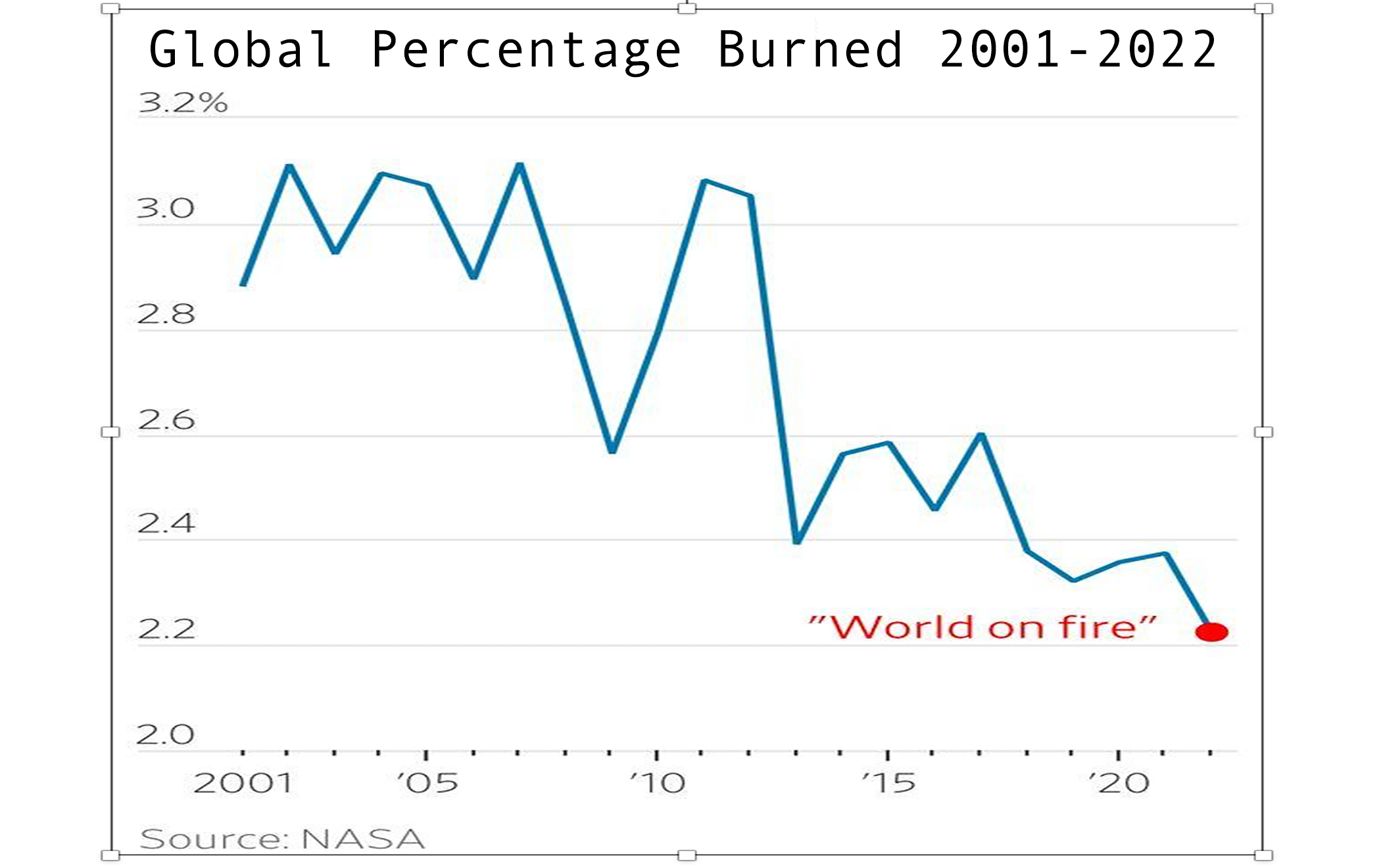Kerby Anderson
The “world is on fire.” That is the repeated claim of environmental activists who claim that fires are increasing worldwide due to climate change. But is that statement true? Satellites have (for more than two decades) been recording fires on the surface of this planet. We know more about the global phenomenon than ever before.
Bjorn Lomborg reminds us that the “data are unequivocal: Since the early 2000s, when 3 percent of the world’s land caught fire, the area burned annually has trended downward.” In the last year (2022) for which we have complete data, the world hit a new record low in terms of burned area. Of course, you wouldn’t know this by reading news accounts or watching television news programs.
Three years ago, I devoted a commentary debunking the claim that the terrible brush fires in Australia were made worse by climate change. At the time, I suggested a simple test. If the pattern in Australia was due to climate change, then you might expect to see the same pattern worldwide. A global survey of wildfire activity back then found less fire activity, not more.
The Canadian wildfires this year certainly got our attention since the smoke covered large parts of the northeastern US. The Canadian prime minister and the US president blamed climate change. But you find the same phenomenon I mentioned years ago. Yes, more land was burned this year in North America, but the rest of the world has seen lower burning.
The latest headlines about fires are reminiscent of the previous headlines about the future extinction of polar bears due to climate change. We don’t hear much about the polar bears these days perhaps because they are more populous than at any time in the last half-century.
The “world is on fire” makes for a scary headline, but it isn’t accurate science.
 Listen Online
Listen Online Watch Online
Watch Online Find a Station in Your Area
Find a Station in Your Area










 Listen Now
Listen Now Watch Online
Watch Online
